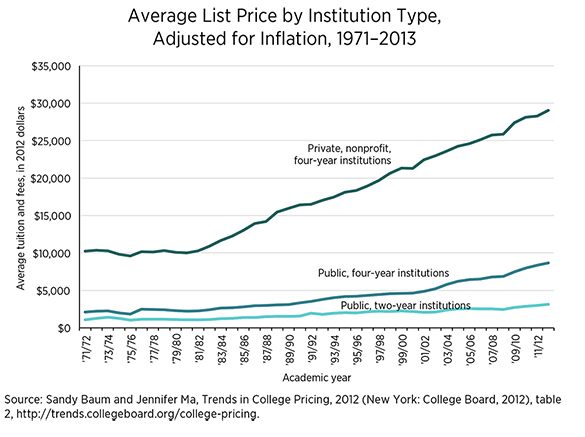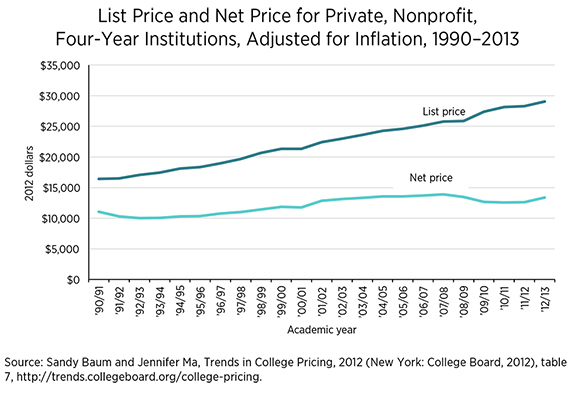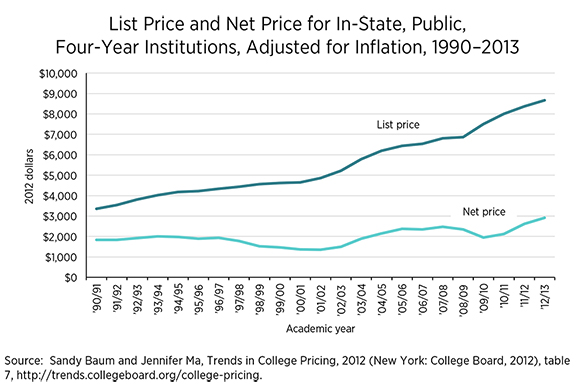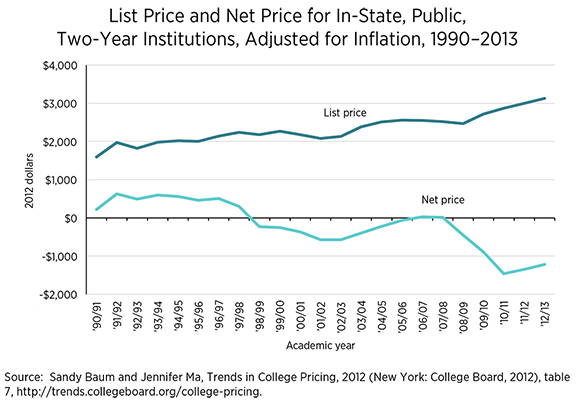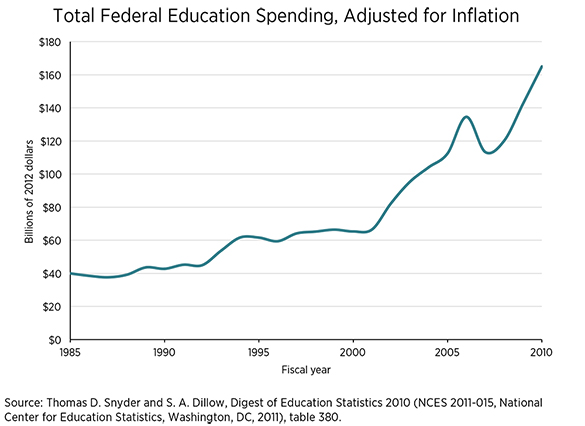- | Academic & Student Programs Academic & Student Programs
- | Government Spending Government Spending
- | Research Papers Research Papers
- |
Government Policy and Tuition in Higher Education
Tuition and fees for higher education have increased at a rate much higher than inflation over the past 40 years. Although the amount students pay has risen much less than listed tuition, net price also continues to increase faster than inflation. Taxpayer funded subsidies to higher education have also increased substantially during this period. The Bennett hypothesis states that tuition will increase in response to subsidies. We review the variety of government programs subsidizing higher education and summarize the existing evidence on the Bennett hypothesis. The evidence on the Bennett hypothesis remains mixed, providing some evidence that the effectiveness of the subsidies in increasing college enrollment is diminished to the degree that taxpayer moneys are diverted to the institutions of higher education.
Listed tuition—essentially the sticker price—for US colleges has increased significantly, even after adjusting for inflation. For all institutions of higher education, that increase averages 71 percent since 1990 and 36 percent since 2000.1 Tuition has increased faster in public, four-year institutions, where the increase has averaged 126 percent since 1990 and 62 percent since 2000, but listed tuition has increased in all categories—public and private, for-profit and not-for-profit, two-year and four-year. Private schools’ prices started in 1990 at much higher absolute levels, so although their increases since then have generally been lower in terms of percentage, they were often higher in terms of dollar amount.
In the 2013 State of the Union address, President Obama stated that “taxpayers cannot continue to subsidize the soaring cost of higher education. Colleges must do their part to keep costs down, and it’s our job to make sure they do.” In the same speech, the president argued that policies such as tax credits, grants, and subsidized loans have been important policy tools to “make college more affordable.” In 2007 President George W. Bush signed into law a bill that increased the maximum Pell Grant award—in order, he said, to “help millions of low-income Americans earn a college degree.” 2 Both presidents failed to mention that the policies they supported could themselves have been responsible for some of the increase in tuition. Considering two effects of the subsidies—direct price reduction and higher sticker prices—at the same time is important for understanding the intended and unintended consequences of higher education subsidies.
Academic research highlights a variety of explanations for rising tuition. These explanations center on three main factors: the rising costs of providing higher education, the increased demand for higher education, and certain changes in government policy. Unfortunately, all of these are aggravated by the concern typically referred to as Bowen’s law—that universities will spend any revenues available to them “only indirectly and distantly [determined] by considerations of need, technology, efficiency, and market wages and prices.” 3
In what follows, we focus on the role that government subsidies play in how universities set tuition. We first document rising college tuition. We then describe common government subsidies for higher education, such as Pell Grants and federal subsidized loans, as well as state-funded institutions and state scholarship programs. We review the existing literature on the effects of government subsidies on tuition, and then provide a summary of our findings.
To speak with a scholar or learn more on this topic, visit our contact page.
